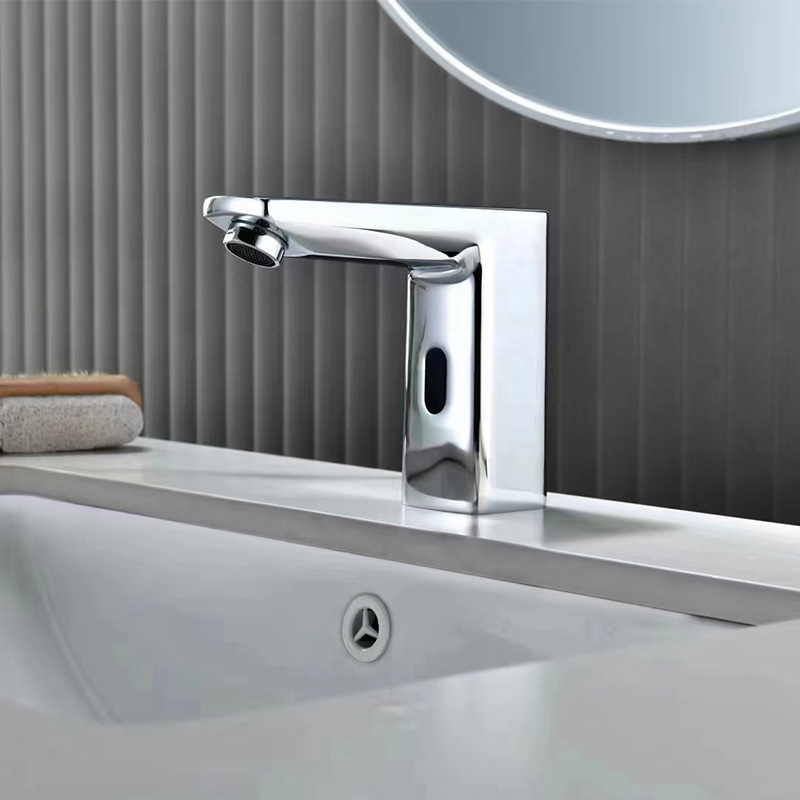As a key product for modern bathroom upgrades, the purchase of smart sensor faucets requires consideration of technical parameters, usage scenarios, functional requirements and other factors. This article will systematically analyze the key points of purchase to help you find the most suitable smart sensor faucet.
## 1. Clarify basic needs: use scenario analysis
### 1.1 Installation location positioning
– **Home use**:
– Kitchen: need to consider anti-oil design, high sensitivity
– Bathroom: focus on water-saving performance, aesthetics
– Balcony: focus on antifreeze performance, durability
– **Commercial places**:
– Public places (airports/stations): require ultra-high durability and anti-destruction design
– Medical institutions: require medical-grade antibacterial performance
– Catering and hotels: focus on hygiene standards and brand image
### 1.2 User group considerations
– Families with elderly/children: choose models with simple operation and anti-scalding protection
– Use by people with disabilities: give priority to barrier-free design products
– Pet families: optional pet-specific sensing mode
## 2. Core performance parameter analysis
### 2.1 Key technical indicators of the sensing system
| Parameters | Quality standards | Detection method |
|——|———-|———-|
| Sensing distance | 8-15cm adjustable | Use a ruler to test the response at different distances |
| Response time | <0.3 seconds | Use high-speed photography to record the delay from action to water discharge |
| Anti-interference | Stable operation under strong light/steam | Test with mobile phone flash |
| Standby power consumption | ≤0.5W | Check Energy Star certification |
### 2.2 Important parameters of water flow system
– **Flow regulation**: High-quality products should have an adjustable range of 2-6L/min
– **Water pressure adaptation**: At least support a water pressure range of 0.05-0.6MPa
– **Temperature control** (constant temperature model): ±1℃ accuracy is preferred
### 2.3 Comparison of power supply mode selection
| Type | Advantages | Disadvantages | Applicable scenarios |
|——|——|———-|———-|
| Dry cell battery | Simple installation | Need to be replaced regularly | Low-frequency use places |
| Lithium battery | Long battery life | Long charging cycle | Daily home use |
| AC power | Continuous power supply | Professional installation required | High-frequency commercial places |
| Hydropower | Maintenance-free | High initial cost | Places with high environmental protection requirements |
## III. Hygiene and safety performance evaluation
### 3.1 Interpretation of antimicrobial certification system
– **ISO 22196**: International standard for antimicrobial performance of plastic surfaces
– **JIS Z 2801**: Japanese industrial standard antimicrobial test
– **ASTM E2180**: American material antimicrobial test standard
It is recommended to choose products that have passed at least one international certification
### 3.2 Safety protection function list
– Mandatory items:
– Anti-scalding protection (temperature ≤48℃)
– Leakage protection (waterproof above IPX4)
– Child lock function
– Recommended items:
– Water shut-off self-closing device
– Low temperature antifreeze design
– Violent destruction alarm
## IV. Material and process identification guide
### 4.1 Main material comparison table
| Material | Advantages | Disadvantages | Identification method |
|——|——|——|———-|
| 304 stainless steel | Strong corrosion resistance | High cost | Test with magnet (weak magnetism) |
| Chrome-plated brass | Beautiful and durable | May contain lead | Check lead content test report |
| Engineering plastics | Low cost | Easy to age | Check UV protection certification |
### 4.2 Surface treatment process level
– **Class 1** (commercial grade): Salt spray test ≥ 96 hours
– **Class 2** (high-end home use): Salt spray test ≥ 72 hours
– **Class 3** (basic): Salt spray test ≥ 24 hours
## 5. Advanced selection of intelligent functions
### 5.1 Practical intelligent function recommendation
– **Basic level**:
– Water consumption statistics
– Low battery reminder
– Fault self-test
– **Advanced level**:
– Voice control
– Gesture recognition
– Water quality monitoring
– **Flagship level**:
– Personalized face recognition settings
– Health data collection
– Smart home linkage
### 5.2 IoT compatibility check
– Confirm supported communication protocols: Wi-Fi/BLE/Zigbee, etc.
– Check compatible smart home platforms: such as HomeKit/Alexa/Google Home, etc.
– Understand data privacy policy: local processing is preferred
## VI. Installation and maintenance considerations
### 6.1 Installation condition checklist
1. Matching of countertop opening size (standard φ32-35mm)
2. Confirmation of water supply pipe location (spacing between hot and cold water pipes)
3. Power access feasibility (AC model)
4. Water purifier compatibility (if pre-purification is required)
### 6.2 Maintenance convenience assessment
– Filter replacement cycle (recommended ≥6 months)
– Soap tank capacity (recommended ≥500ml for home use)
– Whether special cleaning tools are available
– Distribution of local after-sales service outlets
## VII. Brand and after-sales selection strategy
### 7.1 Brand echelon reference
– **International first-line**: Kohler, Moen, Hansgrohe (leading technology, high premium)
– **Domestic high-end**: Jomoo, Arrow (excellent cost-effectiveness, wide service network)
– **Professional cutting-edge**: ORANS, Dr. Wei (multiple innovative functions, avant-garde design)
### 7.2 Key inspection of warranty terms
– Warranty period for core components (recommended ≥3 years)
– Separate warranty policy for sensor module
– Standards for defining man-made damage
– Extended warranty service purchase options
## VIII. Purchase channels and pricing strategies
### 8.1 Channel pros and cons analysis
– **Offline stores**: Can experience the product in person, but the price is higher
– **Brand official website**: Authenticity guarantee, often new products are launched
– **E-commerce platform**: Transparent prices, pay attention to distinguish official flagship stores
### 8.2 Price range reference
– Entry-level: 500-1000 yuan (basic sensing function)
– Mid-range: 1000-2500 yuan (smart interconnection + constant temperature)
– High-end: 2500 yuan or more (full function + custom design)
## IX. Pre-purchase test suggestions
### 9.1 Key points for physical store experience
1. Simulate different angles to test the sensitivity of the sensor
2. Observe whether the water flow is soft and splash-free
3. Experience the temperature adjustment response speed
4. Check whether there is any abnormal sound when each joint moves
### 9.2 Online purchase verification method
– View real buyer video reviews
– Request a third-party test report
– Confirm the seven-day no-reason return and exchange terms
## 10. Common purchase misunderstandings
1. **Excessive pursuit of multi-functions**: The more functions, the higher the failure rate may be
2. **Ignore water pressure adaptation**: Lead to weak water flow or excessive pressure
3. **Underestimate the difficulty of installation**: Special countertops require professional modification
4. **Ignore long-term costs**: Continuous expenditure on battery models
5. **Blindly trust imports**: Domestic high-end products already have international quality
Through the above systematic purchase guide, consumers can avoid most purchase traps and find the most suitable smart sensor faucet according to actual needs. It is recommended to prioritize your own needs, ensure that the core functions meet the standards within the budget, and then consider the value-added features, and finally achieve the most cost-effective choice.

